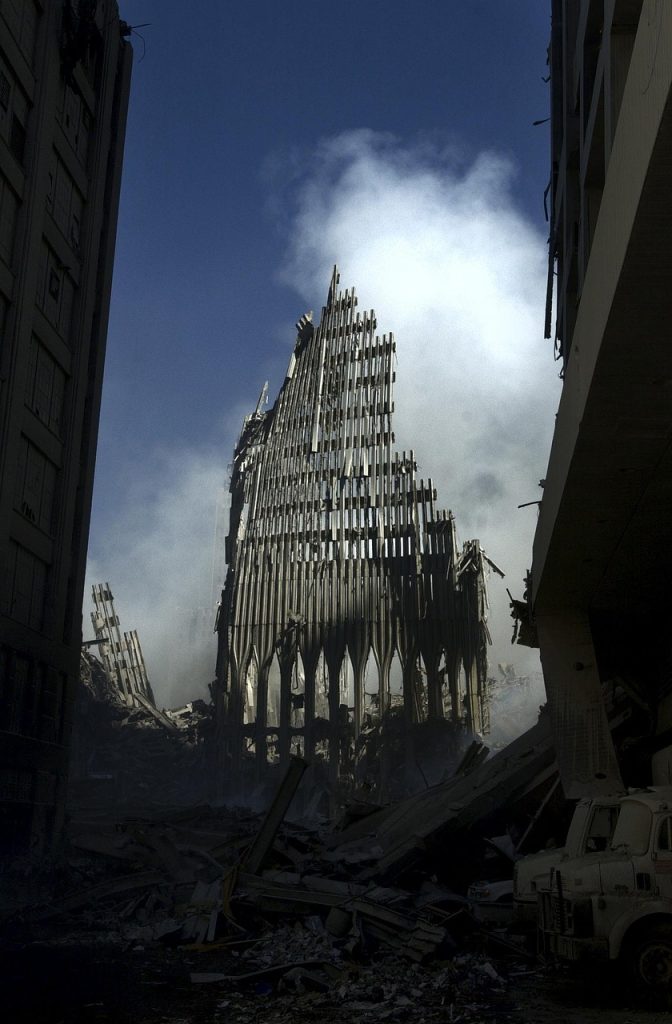Nearly a quarter‑century later, many of us still remember where we were, who we were with and/or how we heard the news. While our lives and the nation of this country were forever changes in the blink of an eye, the echoes of the 9/11 attacks that took place in 2002 are still ringing for many. However, the sounds of this day aren’t in the form of memories of so many, but in the bodies and minds of thousands of survivors and first responders who witnessed this tragedy firsthand. While the nation paused to watch the unthinkable unfolding on tv, and we continued to see the aftermath in our new stories which slowly faded, there are others for whom the health effects have quietly multiplied for years upon years. While the day becomes just an annual remembrance to some, it’s a painful daily reminder to some of the trauma, loss and reality they experienced firsthand. We remember today to honor this day, and always, as it’s imperative to acknowledge and valid that for many there are still so many realities we still face.
While we will never downplay the losses of this day, there were some advances that were made possible due to their devastation to the survivor’s health needs. One of the most harrowing legacies of this day lies in lung health. Studies from Mount Sinai Health as published in The Lancet (https://www.thelancet.com), following rescue and recovery workers shared startling numbers: in the nine years after 9/11, asthma affected roughly 28 % of responders, sinusitis 42%, and gastroesophageal reflux disease (GERD) 39%; nearly 42% showed abnormal lung function tests indicative of persistent damage. Even among civilians and workers exposed to the dust cloud, epidemiologic data estimate that between 3,800 and 12,600 adults developed new-onset asthma, and 67% reported new or worsening respiratory symptoms according to PubMed and the National Institute of Health (https://pubmed.ncbi.nlm.nih.gov/). The extreme dust exposure and injury on that day has been linked to elevated long-term risks of heart disease, asthma, and other chronic respiratory diseases that have lasting effects now, almost 25 years later.
Cancer has also surged in the exposed population. As of 2025, nearly 50,000 individuals—including first responders and civilians—have been diagnosed with cancers linked to toxic debris exposures from 9/11. This marks a 143% increase from five years earlier, with cancers of the skin, prostate, breast, lung, kidney, thyroid, bladder, and blood most prevalent as also shared by the National Institutes of Health. These increases have led to more than 8,200 deaths, with over 3,700 attributed to cancer—exceeding the lives lost on the day of the attacks, which is often overlooked.
Yet, these physical consequences tell only part of the story. The emotional and psychological toll is equally concerning. In the years following the tragedy, PubMed studies found that 16% of enrollers screened positive for probable post-traumatic stress disorder (PTSD), and 8% for serious psychological distress. Among rescue and recovery workers, nine-year cumulative rates ranged up to 32% for PTSD, 27% for depression, and 21% for panic disorder in the same Lancet publication.
Importantly, mental and respiratory symptoms are interwoven. In one registry study, by the American Journal of Public Health https://ajph.aphapublications.org), they found that about 25 percent of people with either lower respiratory symptoms or PTSD had both. Those with symptoms of one condition had four times the odds of meeting criteria for the other, which is a sobering testament to how trauma and physical harm reinforce one another.
More research in the past years shows that injury severity and psychological distress from 9/11 were linked to long-term somatic symptoms 16 years post-exposure, underscoring the need for integrated treatment across mind and body. Registry data also reveals that 20% of enrollees reported confusion or memory loss, with risk rising alongside the number of mental health diagnoses—suggesting a dose‑response relationship between psychological trauma and cognitive decline.
What are we to do with these findings? And what do they teach us? They confront us with plain truths: disaster exposures don’t end when the dust settles and the new stories end. They cast long shadows across decades of human lives. But they also illuminate the power of vigilance and care. The World Trade Center Health Program, along with ongoing monitoring, treatment, and advocacy, have offered hope and access to tens of thousands of affected individuals. There are also local programs that can support people who struggle or are coming to terms with past trauma such as Northeast Kingdom Services, North Country Primary Care and many other resources you can find by calling 2-1-1.
On each anniversary, we remember nearly 3,000 lives were taken in the attacks, and yet we must also honor the thousands more whose lives were altered forever. Recognizing this isn’t political; it is human. It ensures that the courage displayed that day continues its arc through the years, carried forward by acknowledgment, research, care, and compassion. It also brings validation to remembering what we still face.


